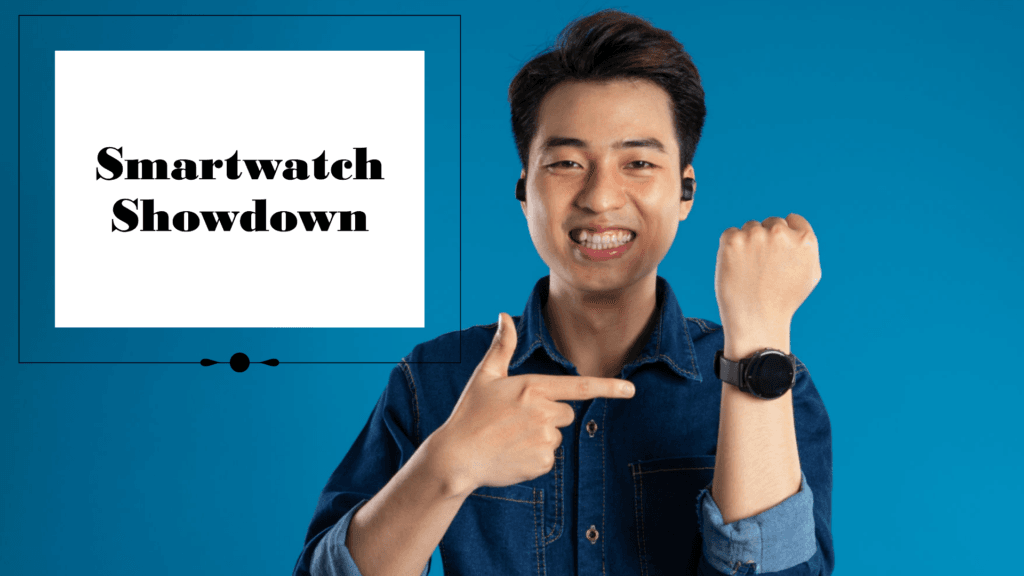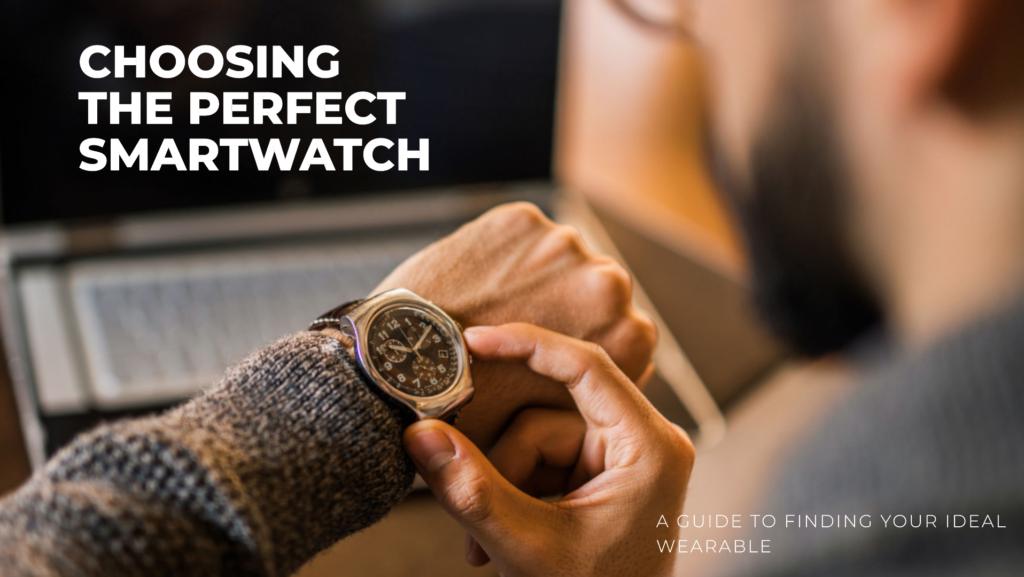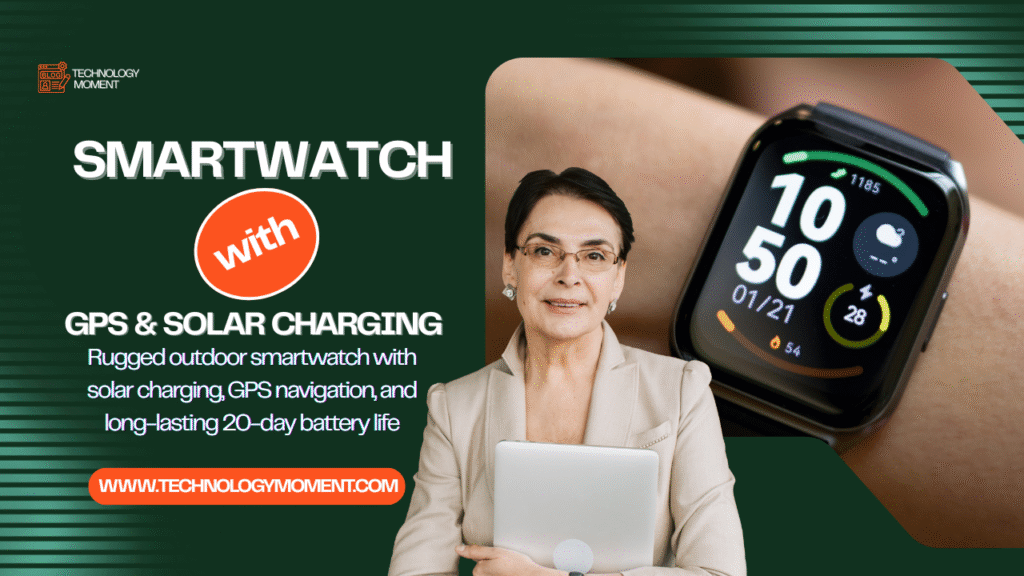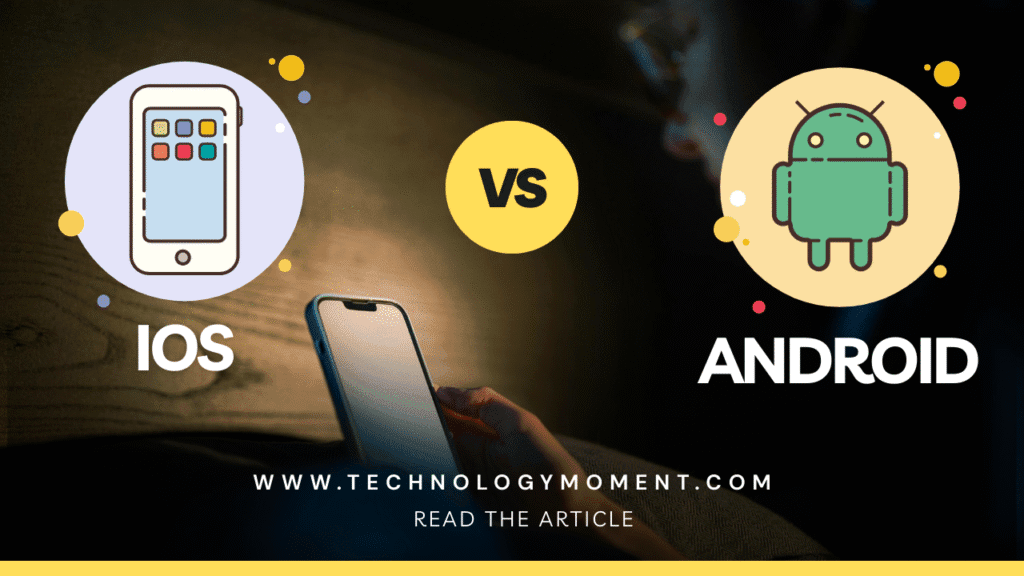Welcome to Technology Moment, your go-to source for the latest in tech innovations. Today, we’re diving into the exciting world of smartwatches, where cutting-edge design meets unparalleled functionality. In this post, we’ll explore the features of a new rival smartwatch that’s set to shake up the industry. Stay tuned as we delve into its sleek design, advanced health tracking capabilities, and seamless connectivity. Whether you’re a tech enthusiast or a fitness fanatic, this smartwatch promises to enhance your lifestyle in ways you’ve never imagined. Join us as we unpack the future of wearable technology, right here on Technology Moment.
What Are Rival Smartwatches?
Rival smartwatches are the cutting-edge devices at the forefront of wearable technology. These watches aren’t just about telling time—they’re about integrating seamlessly into our daily lives, providing functionalities that enhance productivity, health, and connectivity. But what exactly makes a smartwatch a “rival”? It’s all about competition. Rival smartwatches are those that consistently compete for top spots in the market, offering a blend of advanced features, sleek designs, and robust performance. Think Apple Watch, Samsung Galaxy Watch, and Fitbit Versa. These are the big players that push each other to innovate and improve, ensuring consumers get the best possible product.
Why They’re Gaining Popularity
The rise of rival smartwatches can be attributed to several factors. First, there’s the convenience factor. Having a device on your wrist that can handle calls, messages, and notifications without needing to reach for your phone is a huge draw. Then there’s the health aspect. Modern smartwatches come equipped with a plethora of health and fitness tracking features—heart rate monitors, sleep trackers, and even ECG capabilities. This makes them invaluable tools for anyone looking to stay on top of their health.
Additionally, the integration of smartwatches with other smart devices has greatly enhanced their appeal. Smartwatches can now control smart home devices, interact with voice assistants like Siri or Google Assistant, and even facilitate mobile payments. This interconnectedness is a major selling point, creating an ecosystem where all your devices work together harmoniously.
The customization options available with smartwatches also contribute to their popularity. From interchangeable bands to customizable watch faces, users can tailor their smartwatches to fit their personal style and preferences. This level of personalization makes the device feel more like an extension of oneself rather than just another gadget.
Table of Contents
History of Smartwatches
Early Days of Smartwatches
The concept of smartwatches isn’t as new as you might think. It dates back to the 1970s with the introduction of the first digital watches. These watches, like the Pulsar Time Computer by Hamilton, were a novelty at the time, featuring LED displays and basic functionalities such as telling time and date. While rudimentary by today’s standards, they laid the groundwork for the future of wearable technology.
In the 1980s, digital watches began to include more advanced features like calculators and games. The Seiko Data 2000, released in 1983, was one of the earliest examples of a watch that could store data, paving the way for the multifunctional devices we use today.
Evolution to Modern Smartwatches
The transition from basic digital watches to modern smartwatches involved several significant technological advancements. In the early 2000s, companies like IBM and Linux Watch began experimenting with watches that could run limited versions of software, connect to other devices, and provide more than just timekeeping functions.
The real breakthrough came in the late 2000s and early 2010s. With the advent of smartphones, the potential for integrating similar technology into a wrist-worn device became a reality. In 2013, Samsung released the Galaxy Gear, one of the first smartwatches to gain widespread attention. This device featured a color touchscreen, a camera, and the ability to receive notifications, representing a significant leap forward.
Apple’s entry brought a polished, highly functional smartwatch to the masses, integrating seamlessly with the iPhone and introducing a wide array of apps and health-tracking features. This launch marked the beginning of smartwatches becoming mainstream consumer electronics.
Since then, the market has exploded with numerous brands and models, each vying for dominance by offering unique features, improved battery life, enhanced health monitoring, and better connectivity. Companies like Samsung, Garmin, Fitbit, and Huawei have continued to innovate, pushing the boundaries of what smartwatches can do.
Key Milestones in Smartwatch Evolution
- 1972: Hamilton Pulsar Time Computer – The first digital watch with LED display.
- 1983: Seiko Data 2000 – Early example of a watch that could store data.
- 1994: Timex Datalink – One of the first watches to exchange data with a computer.
- 2004: Microsoft SPOT (Smart Personal Object Technology) – Watches that could receive information such as weather and news via FM radio signals.
- 2013: Samsung Galaxy Gear – Introduced features like a camera and color touchscreen.
- 2015: Apple Watch – Revolutionized the market with its integration with iPhone and a vast app ecosystem.
Key Features of Rival Smartwatches
Rival smartwatches have become an essential part of our daily lives, offering a blend of technology and style that enhances both convenience and personal health. Let’s dive into the key features that make these devices stand out:
Health and Fitness Tracking
One of the primary attractions of rival smartwatches is their health and fitness tracking capabilities. These features provide users with real-time data and insights into their physical well-being, helping them maintain a healthy lifestyle.
- Heart Rate Monitoring: Most rival smartwatches come equipped with sensors that monitor your heart rate continuously. This feature is crucial for tracking your cardiovascular health, optimizing workouts, and even detecting irregular heart rhythms.
- GPS and Exercise Tracking: Whether you’re running, cycling, or hiking, built-in GPS functionality allows you to track your routes and measure your performance accurately. Smartwatches can record distances, speed, and elevation, providing detailed feedback on your workouts.
- Sleep Tracking: Understanding your sleep patterns is vital for overall health. Rival smartwatches analyze your sleep stages, including light, deep, and REM sleep, offering insights to improve sleep quality.
- Specialized Health Features: Some advanced models include features like blood oxygen level monitoring, electrocardiograms (ECG), and even stress tracking. These tools offer comprehensive health data that can alert you to potential health issues.
Notifications and Connectivity
Smartwatches are designed to keep you connected, even when your smartphone isn’t within reach. This aspect is all about ensuring you’re always in the loop with minimal disruption.
- Message and Call Notifications: Receive alerts for incoming calls, messages, and emails directly on your wrist. This means you can stay connected without constantly checking your phone.
- App Integration: Seamlessly integrate with various apps for social media updates, news, weather forecasts, and more. Some smartwatches even allow you to respond to messages and manage notifications directly.
- Bluetooth and Wi-Fi: These connectivity options ensure your smartwatch syncs effortlessly with your smartphone, allowing for smooth data transfer and device control.
Battery Life and Charging
Rival smartwatches strive to balance powerful features with battery efficiency.
- Long-Lasting Battery: Depending on usage, many rival smartwatches can last anywhere from one to several days on a single charge. This longevity is essential for users who rely on their devices for continuous tracking and connectivity.
- Quick Charging: Fast charging capabilities mean you can power up your device swiftly, reducing downtime and keeping your smartwatch ready for use.
- Power-Saving Modes: Some smartwatches offer power-saving settings that extend battery life by limiting certain functions, ensuring your device lasts as long as possible when you need it most.
Design and Customization
Rival smartwatches offer a range of design and customization options to suit individual styles.
- Material and Build Quality: High-quality materials such as stainless steel, aluminum, and sapphire crystal are used to make these watches durable and stylish. They can withstand daily wear and tear while maintaining a premium look.
- Customizable Watch Faces: Personalize your smartwatch with different watch faces, ranging from digital to analog styles. Some brands even allow you to create custom faces using your own photos.
- Interchangeable Bands: Switch up your look with interchangeable bands. From silicone for sporty activities to leather and metal for a more sophisticated appearance, the options are virtually limitless.
Top Rival Smartwatch Brands
When we talk about the top rival smartwatch brands, we’re diving into the heavyweights of the smartwatch market. These brands have consistently proven themselves through innovation, quality, and user satisfaction.

Apple Watch
The Apple Watch is often considered the gold standard in the smartwatch industry. Apple has successfully combined style, functionality, and seamless integration with its ecosystem of devices. Key features include:
- Health and Fitness Tracking: Advanced heart rate monitoring, ECG, blood oxygen levels, and fitness tracking.
- App Ecosystem: Extensive range of third-party apps available through the Apple App Store.
- User Interface: Intuitive interface with a sleek design and high-resolution display.
- Customization: Variety of bands and watch faces to suit personal style.
Samsung Galaxy Watch
Samsung’s Galaxy Watch series is a strong competitor to the Apple Watch, particularly for Android users. Known for its robust features and sleek design, the Galaxy Watch offers:
- Health Monitoring: Comprehensive fitness tracking, including sleep monitoring, heart rate, and even stress levels.
- Connectivity: Excellent integration with Android devices, and decent compatibility with iOS.
- Battery Life: Often superior battery life compared to other high-end smartwatches.
- Customization: A range of stylish designs and interchangeable bands.
Garmin Forerunner
Garmin is a name synonymous with fitness and outdoor activities, and its Forerunner series is particularly popular among athletes. Noteworthy features include:
- GPS Accuracy: Industry-leading GPS tracking for runners, cyclists, and outdoor enthusiasts.
- Health Metrics: Detailed tracking of various health metrics, including VO2 max, training status, and recovery time.
- Durability: Rugged design built to withstand harsh conditions.
- Performance Insights: Advanced performance analytics for serious athletes.
Fitbit Versa
Fitbit has long been a staple in the fitness tracking market, and the Versa series blends traditional fitness tracking with smartwatch capabilities. Key features include:
- Fitness Tracking: Comprehensive activity tracking, sleep analysis, and heart rate monitoring.
- User Community: Access to a large community of fitness enthusiasts for motivation and challenges.
- Battery Life: Typically offers impressive battery life, lasting several days on a single charge.
- Affordability: Generally more affordable compared to other premium smartwatches.
Huawei Watch
Huawei has made significant strides in the smartwatch market, offering high-quality devices with impressive features. The Huawei Watch series stands out for:
- Health Tracking: Advanced health monitoring features, including SpO2 measurement and stress tracking.
- Battery Life: Exceptional battery life, often extending up to two weeks.
- Performance: Smooth performance and good compatibility with both Android and iOS devices.
Why These Brands Stand Out
Each of these brands brings something unique to the table, whether it’s Apple’s seamless ecosystem integration, Samsung’s feature-rich designs, Garmin’s athlete-focused tools, Fitbit’s strong community support, or Huawei’s elegant aesthetics and impressive battery life. They cater to different segments of the market, ensuring there’s a top rival smartwatch for everyone, from tech enthusiasts to fitness buffs to style-conscious users.
Comparing Rival Smartwatches
When it comes to comparing rival smartwatches, there are several factors to consider to ensure you’re making the best choice for your needs. Let’s break down the main aspects to compare:
Price Points
One of the first things most people look at is the price. Rival smartwatches come in a wide range of prices, from budget-friendly options to high-end models that cost several hundred dollars.
- Apple Watch: Known for its premium pricing, the Apple Watch series often starts at around $300 and can go up to $700 or more, depending on the model and features.
- Samsung Galaxy Watch: Typically, these watches are slightly more affordable than Apple, with prices ranging from $200 to $400.
- Garmin Forerunner: These are specialized for fitness enthusiasts and athletes, with prices varying widely from $150 to $600, based on the features.
- Fitbit Versa: Positioned as a mid-range option, Fitbit Versa watches usually cost between $150 and $250.
- Huawei Watch: These are often competitively priced, starting at around $150 and going up to $300.
Feature Comparison
Different smartwatches come packed with a variety of features tailored to different users. Here’s a snapshot of what some of the top rival smartwatches offer:
- Apple Watch: Seamless integration with iOS, advanced health features like ECG and blood oxygen monitoring, a wide range of apps, and high customization options.
- Samsung Galaxy Watch: Excellent Android integration, robust health and fitness tracking, and a stylish, versatile design.
- Garmin Forerunner: Exceptional GPS accuracy, extensive fitness metrics, and long battery life, making it ideal for athletes.
- Fitbit Versa: Strong focus on health and fitness, sleep tracking, and a user-friendly interface at an affordable price.
- Huawei Watch: Good health and fitness tracking, strong battery life, and often competitive pricing.
Performance and User Experience
Performance and user experience can vary significantly between smartwatches. Here’s what to expect from some of the top contenders:
- Apple Watch: Known for its smooth performance, intuitive interface, and a vast app ecosystem. It’s particularly well-suited for users already in the Apple ecosystem.
- Samsung Galaxy Watch: Offers a smooth and responsive interface with great connectivity options. It’s ideal for Android users and provides a balance of performance and battery life.
- Garmin Forerunner: While the interface might not be as sleek as Apple or Samsung, its performance in fitness tracking is unparalleled. It’s perfect for serious athletes.
- Fitbit Versa: Provides a simple and effective user experience with a strong focus on health and fitness. It’s easy to use and offers great battery life.
- Huawei Watch: Offers a good balance of features and performance at a competitive price, though its app ecosystem may not be as extensive as Apple or Samsung.
Health and Fitness Tracking
Health and fitness tracking has become one of the most compelling features of rival smartwatches, making them essential tools for anyone looking to lead a healthier lifestyle. Here’s a detailed breakdown of what these features typically include:
Heart Rate Monitoring
One of the fundamental health-tracking features in smartwatches is heart rate monitoring. These devices use optical sensors to measure your heart rate in real-time.
- Continuous Monitoring: It provides continuous heart rate tracking, allowing you to monitor your heart health throughout the day and night.
- Exercise Analysis: During workouts, it helps you stay within your target heart rate zones, ensuring you’re exercising at the right intensity.
- Health Alerts: Some smartwatches can detect irregular heartbeats and alert you to potential issues, prompting early medical consultation.
GPS and Exercise Tracking
GPS and exercise tracking are indispensable for outdoor activities like running, cycling, and hiking. Rival smartwatches come equipped with built-in GPS to provide accurate tracking of your activities:
- Route Mapping: GPS tracks your route, allowing you to review and share your workout paths.
- Distance and Pace: It accurately measures the distance you’ve traveled and your pace, helping you track your progress and set new goals.
- Elevation Data: For hikers and trail runners, elevation tracking offers insights into the vertical distance covered.
Sleep Tracking
Understanding your sleep patterns is essential for overall health. Smartwatches offer advanced sleep tracking features that monitor various aspects of your sleep:
- Sleep Stages: They track different stages of sleep—light, deep, and REM—providing a detailed analysis of your sleep quality.
- Sleep Duration: Monitoring how long you sleep each night helps you ensure you’re getting enough rest.
- Sleep Insights: Some smartwatches offer personalized insights and tips to improve your sleep habits based on the data collected.
Specialized Health Features
Rival smartwatches are continually advancing, adding specialized health features that cater to specific health needs:
- Blood Oxygen Monitoring: This feature measures the oxygen levels in your blood, which can be critical for understanding respiratory health and overall well-being.
- ECG (Electrocardiogram): Some smartwatches can perform an ECG to detect irregular heart rhythms and provide early warnings for conditions like atrial fibrillation.
- Stress Monitoring: By analyzing heart rate variability, smartwatches can gauge your stress levels and offer relaxation exercises to help manage stress.
- Menstrual Cycle Tracking: For women, this feature allows tracking of menstrual cycles, providing predictions and health insights.
Integration with Fitness Apps
Smartwatches often integrate seamlessly with popular fitness and health apps, enhancing their tracking capabilities:
- Syncing Data: They sync data with apps like Apple Health, Google Fit, and others, providing a centralized view of your health metrics.
- Fitness Challenges: These integrations often include social features, allowing you to participate in fitness challenges with friends or a community for added motivation.
- Personalized Workouts: Based on your activity data, some apps offer personalized workout plans and recommendations.
Overall Benefits
The health and fitness tracking features of rival smartwatches offer numerous benefits:
- Motivation: Tracking your progress can be incredibly motivating, encouraging you to stay active and reach your fitness goals.
- Accountability: Regular monitoring helps you stay accountable to your health and fitness routines.
- Early Detection: By continuously monitoring your vital signs, smartwatches can aid in the early detection of potential health issues, allowing for timely medical intervention.
- Holistic Health: These devices offer a comprehensive view of your health, combining data from various sensors to provide a holistic picture of your well-being.
Smartwatch Connectivity
Integration with Smartphones: One of the most significant features of a smartwatch is its ability to seamlessly integrate with your smartphone. This integration ensures that you can receive notifications, messages, and calls directly on your wrist, reducing the need to constantly check your phone. Most rival smartwatches are compatible with both iOS and Android devices, though some may offer better functionality with specific operating systems. For example, the Apple Watch is known for its seamless integration with iPhones, while Samsung’s Galaxy Watch offers excellent compatibility with both Android phones and iPhones, though with slightly limited features on the latter.
App Ecosystem: The app ecosystem is another crucial aspect of smartwatch connectivity. Leading smartwatches come with their own app stores, allowing users to download a wide variety of applications. These apps can range from fitness tracking and health monitoring to productivity tools and entertainment. The availability and quality of apps can significantly enhance the functionality of a smartwatch. Apple Watch’s App Store and Google’s Wear OS Play Store offer extensive selections, ensuring that users can find apps tailored to their specific needs. The ability to sync these apps with their smartphone counterparts also ensures a more integrated and user-friendly experience.
Bluetooth and Wi-Fi Capabilities: Bluetooth and Wi-Fi capabilities are essential for ensuring constant connectivity between your smartwatch and other devices. Bluetooth allows your smartwatch to stay connected to your smartphone within a certain range, usually up to 30 feet. This connection enables real-time notifications, music control, and other interactive features. Most modern smartwatches also come with Wi-Fi capabilities, which means they can connect to the internet independently of your phone. This is particularly useful for downloading apps, updating software, and accessing online services even when your phone isn’t nearby.
LTE and Cellular Options: For those who need their smartwatch to function independently of their smartphone, LTE and cellular options are a game-changer. Some rival smartwatches offer models with built-in cellular capabilities, allowing users to make and receive calls, send messages, and use data without needing their phone. This is ideal for active users who don’t want to carry their phone during workouts or outdoor activities. However, it’s important to note that cellular models typically come at a higher price point and may require an additional data plan.
NFC and Payment Integration: Near Field Communication (NFC) technology is another connectivity feature that enhances the functionality of smartwatches. NFC allows users to make contactless payments directly from their smartwatch, making it a convenient alternative to carrying physical credit cards or cash. Services like Apple Pay, Samsung Pay, and Google Pay are widely supported by rival smartwatches, enabling secure and quick transactions. This feature is particularly useful for quick purchases and adds an extra layer of convenience to everyday life.
GPS and Location Services: GPS and location services are vital for fitness enthusiasts and outdoor adventurers. Most rival smartwatches come equipped with built-in GPS, allowing for accurate tracking of runs, hikes, and other outdoor activities. This feature not only helps in mapping out routes but also in tracking distance, pace, and other performance metrics. Additionally, some smartwatches offer advanced location services, such as altitude tracking and geofencing, which can be useful for specific sports and activities.
Synchronization with Smart Home Devices: In today’s connected world, smartwatches are also becoming integral to smart home ecosystems. Many rival smartwatches can sync with smart home devices, allowing users to control lights, thermostats, security cameras, and more directly from their wrist. This level of connectivity adds to the convenience and functionality of smartwatches, making them a central hub for managing various aspects of a smart home.
Voice Assistants: Voice assistants like Siri, Google Assistant, and Bixby enhance smartwatch connectivity by allowing users to perform tasks using voice commands. This hands-free control can be particularly useful when you’re on the go or have your hands full. Whether it’s setting reminders, checking the weather, or sending a text message, voice assistants make interacting with your smartwatch more intuitive and efficient.
Data Sync and Cloud Storage: Finally, data sync and cloud storage are essential for ensuring that all your information is backed up and accessible across devices. Most rival smartwatches offer seamless synchronization with cloud services, ensuring that your health data, app settings, and other important information are securely stored. This means you can access your data from multiple devices, and it stays safe even if you switch to a new smartwatch or phone.
Battery Life Considerations
1. Charging Speed
One of the primary concerns for smartwatch users is how quickly their device can recharge. Charging speed varies among different models, with some offering fast charging capabilities that can replenish the battery in a short amount of time. This feature is particularly beneficial for users who lead active lifestyles and need their smartwatches ready to use quickly.
2. Battery Longevity
Battery longevity refers to how long a smartwatch can operate on a single charge under typical usage conditions. This metric is crucial as it determines how frequently users need to recharge their devices. Modern smartwatches employ various strategies to optimize battery life, such as power-efficient processors, OLED screens that consume less power, and software optimizations that minimize background activity.
3. Tips to Extend Battery Life
Manufacturers often provide tips and settings to extend the battery life of smartwatches:
- Display Settings: Adjusting brightness levels and screen timeout settings can significantly impact battery consumption.
- App Management: Closing unnecessary background apps and limiting app notifications can conserve battery.
- Disable Features: Turning off features like GPS, Wi-Fi, and always-on display mode when not needed can extend battery life.
- Software Updates: Regular updates from manufacturers often include battery optimization improvements, so keeping the smartwatch updated is important.
Example: Garmin Forerunner Series
For instance, Garmin’s Forerunner series smartwatches are renowned for their long battery life tailored for fitness enthusiasts. Models like the Garmin Forerunner 945 boast up to two weeks of battery life in smartwatch mode and up to 36 hours in GPS mode. This endurance makes them ideal for long-distance runners or those who engage in multi-day outdoor activities without frequent access to charging stations.
Design and Aesthetics
Material and Build Quality: One of the primary considerations when choosing a smartwatch is its construction materials. High-end smartwatches often use materials like stainless steel, titanium, or ceramic for durability and a premium feel. On the other hand, more affordable options might utilize plastic or aluminum, which can impact both the aesthetics and durability of the device.
Customization Options: Many smartwatch brands offer a variety of customization options to cater to different preferences and styles. This can include interchangeable straps or bands in various materials (e.g., leather, silicone, metal) and colors. The ability to personalize the look of the smartwatch allows users to match it with their outfits or personal taste.
Display Quality: The display plays a significant role in both the aesthetics and usability of a smartwatch. High-resolution displays with vibrant colors and good brightness levels enhance the visual appeal of the device. Additionally, the type of display technology (e.g., OLED, AMOLED, LCD) can affect factors such as power efficiency and outdoor visibility, influencing user experience.
Ergonomics and Comfort: Design isn’t just about looks; it’s also about how comfortable and practical the smartwatch is to wear. Factors such as the shape of the case, the curvature of the display, and the weight of the device can all impact comfort. A well-designed smartwatch should fit comfortably on the wrist and not cause any discomfort, even during extended wear.
Water and Dust Resistance: Smartwatches are often worn in various environments, including during workouts or outdoor activities. The design should incorporate adequate water and dust resistance (IP ratings) to ensure durability and reliability in different conditions. This feature is particularly important for users who lead active lifestyles or enjoy outdoor sports.
Design Innovation: Some smartwatches stand out due to their innovative design elements. This could include bezel-less displays, curved screens, or even modular designs that allow for additional functionalities or customization options. Innovative design can set a smartwatch apart from its competitors and appeal to users looking for something unique.
Brand Identity: The design of a smartwatch often reflects the brand’s identity and ethos. For example, Apple’s smartwatches are known for their sleek and minimalist design that integrates seamlessly with other Apple products. Samsung, on the other hand, focuses on offering a range of styles and features that appeal to different user preferences.
Smartwatch Usability
Smartwatch usability encompasses several key aspects that determine how easy and enjoyable it is to use the device:
- Ease of Use: This refers to how straightforward it is for users to navigate through the smartwatch’s features and functions. Intuitive controls, clear menus, and logical organization contribute to better ease of use.
- User Interface and Navigation: A well-designed user interface (UI) is crucial. This includes factors such as the layout of icons, readability of text, and responsiveness to touch gestures. Intuitive navigation ensures that users can access desired information or perform tasks quickly.
- Accessibility Features: Smartwatches should cater to users with different needs. Accessibility features such as voice commands, screen readers, adjustable font sizes, and tactile feedback options enhance usability for individuals with disabilities or specific preferences.
- Customization Options: Users appreciate the ability to customize their smartwatch experience. This can include choosing watch faces, arranging widgets, setting shortcuts, and personalizing notifications. Customization not only enhances usability but also allows users to tailor the device to their lifestyle.
- Integration with Ecosystem: Seamless integration with other devices and platforms (e.g., smartphones, fitness apps) enhances usability. This ensures that data syncs effortlessly and that users can switch between devices without disruption.
- Performance: Smooth and responsive performance is essential for a positive user experience. Lag-free interactions, quick app launches, and reliable connectivity contribute to overall usability.
- Battery Life Management: Usability also involves how effectively the smartwatch manages its battery life. Features like power-saving modes, accurate battery life indicators, and efficient charging methods impact user satisfaction.
- Learning Curve: Ideally, a smartwatch should have a manageable learning curve. Even with advanced features, users should be able to grasp basic functions quickly and gradually explore more complex capabilities.
Why Smartwatch Usability Matters
Smartwatch usability directly affects user satisfaction and adoption rates. A device that is easy to use and integrates seamlessly into daily routines enhances productivity and convenience. Conversely, poor usability can lead to frustration, reduced usage, and negative reviews.
Manufacturers strive to improve smartwatch usability through user testing, ergonomic design principles, and continuous software updates. By prioritizing intuitive design and user feedback, they aim to create devices that are not only technologically advanced but also user-friendly across diverse demographics.
Security and Privacy Concerns
1. Data Protection: Smartwatches, like any connected device, collect a significant amount of personal data. This includes health metrics (like heart rate, sleep patterns, and exercise routines), GPS location data, and even biometric information in some advanced models. Manufacturers need to implement robust data protection measures to safeguard this sensitive information from unauthorized access or breaches.
2. Encryption Standards: One of the primary concerns is how well the smartwatch encrypts data both at rest and in transit. Encryption ensures that even if data is intercepted or accessed without authorization, it remains unreadable and protected. High-grade encryption protocols (such as AES-256) are essential for maintaining data integrity and user privacy.
3. Data Storage Practices: Understanding where and how the smartwatch manufacturer stores user data is critical. Cloud storage, for example, should adhere to stringent security protocols to prevent data leaks or hacks. Similarly, data stored locally on the device should be encrypted and accessible only via secure authentication methods.
4. Privacy Settings: Users should have granular control over what data their smartwatch collects and shares. Privacy settings should be straightforward and comprehensive, allowing users to opt-out of data collection for certain features if they choose. Transparent privacy policies from manufacturers help users make informed decisions about their data.
5. Consent and Permissions: Clear consent mechanisms should be in place to ensure users understand how their data will be used and shared. Smartwatches should request permissions before accessing sensitive information and provide options to revoke permissions at any time.
6. Secure Connectivity: Smartwatches often connect to smartphones, tablets, or other devices via Bluetooth, Wi-Fi, or cellular networks. Each of these connection methods presents potential security risks if not properly secured.
7. Bluetooth and Wi-Fi Security: Bluetooth Low Energy (BLE) vulnerabilities, for instance, could expose smartwatches to unauthorized access or data interception. Manufacturers should regularly update firmware to patch security vulnerabilities and adopt the latest Bluetooth security standards.
8. Device Pairing and Authentication: Strong authentication protocols between the smartwatch and paired devices are essential. This prevents unauthorized access and ensures that only trusted devices can exchange data securely.
Pros and Cons of Rival Smartwatches
When considering a rival smartwatch, it’s crucial to weigh the benefits and potential drawbacks. These devices offer a range of features that enhance daily life but also come with some limitations. Here’s a detailed look at the pros and cons:
Pros of Rival Smartwatches
- Health and Fitness Tracking
- Comprehensive Monitoring: Rival smartwatches excel in tracking various health metrics, including heart rate, steps, calories burned, sleep patterns, and even advanced metrics like VO2 max and ECG.
- Motivation and Goals: These devices help users set fitness goals and stay motivated through reminders, challenges, and progress tracking.
- Personalized Insights: Smartwatches provide personalized health insights based on the collected data, helping users make informed lifestyle choices.
- Connectivity and Convenience
- Notifications on the Go: Receive calls, messages, emails, and social media alerts directly on your wrist, reducing the need to check your phone constantly.
- Seamless Integration: Most rival smartwatches integrate smoothly with smartphones, allowing for synchronization of contacts, calendars, and apps.
- Hands-Free Control: Voice assistants (like Siri, Google Assistant, or Bixby) enable hands-free control of various functions, enhancing convenience.
- Customizability and Style
- Interchangeable Bands: Customize the look of your smartwatch with interchangeable bands in various materials, colors, and styles.
- Watch Faces: Personalize the display with different watch faces, ranging from digital to analog, or even custom images.
- Design Variety: Choose from a wide range of designs, from sporty to elegant, ensuring there’s a model to suit every taste.
- Productivity and Efficiency
- Time Management: Use features like calendar reminders, alarms, and task lists to stay organized and manage your time effectively.
- Quick Actions: Perform quick actions like sending replies, setting reminders, or checking weather forecasts without needing to use your phone.
- Advanced Features
- Contactless Payments: Use NFC technology for contactless payments, making transactions faster and more convenient.
- GPS and Navigation: Built-in GPS allows for accurate tracking of outdoor activities and provides navigation assistance without needing a phone.
- Music and Media Control: Control your music playback, and in some models, store music directly on the device for phone-free listening.
Cons of Rival Smartwatches
- Battery Life
- Frequent Charging: Advanced features such as high-resolution displays, continuous heart rate monitoring, and GPS can drain the battery quickly, necessitating frequent recharges.
- Battery Degradation: Over time, the battery capacity may degrade, reducing the overall battery life and performance.
- Cost
- High Initial Investment: Rival smartwatches often come with a high price tag, especially models with advanced features and premium materials.
- Ongoing Expenses: Additional costs can include replacement bands, screen protectors, and potential repairs or servicing.
- Complexity
- Learning Curve: The abundance of features and settings can be overwhelming for new users, requiring time to learn and customize.
- Software Updates: Regular software updates, while beneficial, can occasionally cause issues or require adjustments to user settings.
- Dependency on Smartphones
- Limited Standalone Functionality: Many smartwatches rely heavily on pairing with a smartphone for full functionality, which can be limiting if the phone is not nearby.
- Compatibility Issues: Not all smartwatches are compatible with all smartphone brands, potentially restricting the choice based on your phone model.
- Privacy and Security
- Data Privacy Concerns: The collection and storage of health and activity data can raise privacy concerns, especially if data security measures are not robust.
- Potential for Hacking: Like any connected device, smartwatches are vulnerable to hacking, which can compromise personal information.
- Durability
- Wear and Tear: Despite being designed for daily wear, smartwatches are susceptible to scratches, screen damage, and wear and tear over time.
- Water Resistance Limits: While many smartwatches are water-resistant, they are not always waterproof, and exposure to water can sometimes cause damage.
Future Trends in Smartwatch Technology
The world of smartwatches is constantly evolving, with new advancements and trends emerging every year. As technology continues to progress at a rapid pace, the future of smartwatches looks incredibly promising. Here, we explore some of the most exciting trends that are likely to shape the future of smartwatch technology.
1. Advanced Health Monitoring
Smartwatches have already made significant strides in health and fitness tracking, but the future holds even more advanced capabilities. Expect to see:
- Blood Glucose Monitoring: Non-invasive sensors that can monitor blood glucose levels, which will be a game-changer for diabetics.
- Advanced Sleep Tracking: More precise sleep tracking features that analyze sleep stages in detail and offer personalized recommendations for better sleep quality.
- ECG and Blood Pressure Monitoring: Improved accuracy and more accessible ECG (electrocardiogram) and blood pressure monitoring features, making them reliable tools for early detection of potential health issues.
2. Improved Battery Life and Charging
Battery life is a crucial factor for smartwatch users, and future trends indicate significant improvements in this area:
- Solar Charging: Integration of solar panels into the watch design to harness solar energy and extend battery life.
- Fast Charging: Development of faster charging technologies that reduce the time needed to recharge the smartwatch.
- Energy-Efficient Components: Use of more energy-efficient processors and components that optimize battery usage and extend the time between charges.
3. Enhanced Connectivity and Independence
Future smartwatches will offer enhanced connectivity options, making them more independent from smartphones:
- Standalone Connectivity: Improved LTE and 5G connectivity will allow smartwatches to perform more functions without relying on a paired smartphone.
- Wi-Fi 6 and Beyond: Adoption of the latest Wi-Fi standards to ensure faster and more reliable internet connections.
- Direct IoT Integration: Seamless integration with other Internet of Things (IoT) devices, allowing smartwatches to control smart home systems, car functions, and more.
4. Augmented Reality (AR) Integration
Augmented reality is set to make its way into smartwatch technology, providing users with immersive experiences:
- AR Fitness Training: Real-time AR feedback during workouts, offering visual cues and guidance directly on the smartwatch screen.
- AR Navigation: Enhanced navigation features with AR overlays showing directions and points of interest directly on the watch display.
- Interactive AR Apps: Development of new apps that utilize AR to provide interactive and engaging experiences, such as virtual assistants and educational tools.
5. Customization and Personalization
Future smartwatches will offer even greater levels of customization and personalization to cater to individual preferences:
- Customizable Interfaces: More options for customizing watch faces, widgets, and overall interface design to reflect personal style and preferences.
- AI-Powered Recommendations: Smartwatches using artificial intelligence to learn user habits and preferences, offering personalized suggestions for apps, fitness routines, and more.
- Interchangeable Components: Modular designs allowing users to easily swap out components like straps, batteries, and sensors to tailor the smartwatch to their needs.
6. Sustainability and Eco-Friendly Designs
As environmental concerns grow, smartwatch manufacturers are focusing on sustainability:
- Eco-Friendly Materials: Use of recycled and sustainable materials in smartwatch construction to reduce environmental impact.
- Green Manufacturing Practices: Adoption of environmentally friendly manufacturing processes to minimize carbon footprints.
- Longevity and Repairability: Designing smartwatches with longer lifespans and easier repairability to reduce electronic waste.
7. Enhanced Security and Privacy Features
Security and privacy will continue to be paramount in the development of future smartwatches:
- Biometric Authentication: Advanced biometric security measures such as facial recognition and fingerprint sensors integrated into smartwatches.
- Encrypted Communications: Stronger encryption protocols to ensure secure data transmission and protect user information.
- Privacy Controls: Enhanced privacy settings allowing users to have greater control over the data collected by their smartwatches and how it is used.
8. Integration with Wearable Ecosystems
Smartwatches will become central hubs in the broader wearable ecosystem:
- Seamless Integration: Better compatibility and seamless integration with other wearable devices such as smart glasses, fitness trackers, and health monitors.
- Unified Health Data: Centralized health data management, allowing users to track and analyze their health metrics across multiple devices within a single ecosystem.
- Cross-Device Functionality: Enhanced functionality that allows smartwatches to control and interact with other wearable devices, creating a cohesive user experience.
9. Next-Gen Display Technology
The display technology of smartwatches is also set to improve:
- Flexible Displays: Adoption of flexible and foldable displays that offer larger screen real estate while maintaining compact form factors.
- MicroLED and OLED: Use of advanced display technologies like MicroLED and OLED for brighter, more energy-efficient, and higher-resolution screens.
- Always-On Displays: Enhanced always-on display modes that provide critical information at a glance without significantly draining the battery.
How to Choose the Right Smartwatch
Selecting the right smartwatch can be a daunting task, given the plethora of options available on the market. To make an informed decision, it’s crucial to consider several factors that align with your personal preferences, lifestyle, and budget.

Assessing Your Needs
The first step in choosing a smartwatch is to determine what you need from the device. Ask yourself the following questions:
- What are my primary uses for a smartwatch? Are you looking for a fitness companion, a health monitor, a productivity tool, or just a stylish accessory?
- What features are non-negotiable? Do you need GPS for outdoor activities, heart rate monitoring, music storage, or mobile payments?
Understanding your primary requirements will help narrow down the choices significantly.
Budget Considerations
It’s essential to set a budget that you’re comfortable with. Keep in mind that more expensive models often come with advanced features and better build quality. However, there are many mid-range smartwatches that offer excellent value for money with a robust set of features.
Brand Loyalty and Preferences
Brand loyalty can play a significant role in your decision-making process. If you’re already invested in a particular ecosystem (like Apple or Samsung), it might make sense to stick with that brand for seamless integration and compatibility with your existing devices.
- Apple Watch: Ideal for iPhone users, offering seamless integration with iOS devices, extensive app support, and premium design.
- Samsung Galaxy Watch: Best suited for Android users, especially those with Samsung smartphones, known for its versatile features and robust build quality.
- Fitbit: Focuses on health and fitness tracking, suitable for fitness enthusiasts.
- Garmin: Excellent for athletes and outdoor adventurers, offering detailed tracking and rugged design.
- Huawei Watch: Offers a balance of features and affordability, with strong battery life.
Features to Consider
When evaluating different smartwatches, pay close attention to the following features:
- Health and Fitness Tracking: Look for comprehensive health monitoring features such as heart rate tracking, sleep analysis, and activity tracking. Advanced models may include ECG, blood oxygen levels, and stress monitoring.
- Battery Life: Battery performance can vary widely. Some smartwatches require daily charging, while others can last several days on a single charge.
- Design and Comfort: A smartwatch is a personal accessory, so its design, size, and comfort are important. Look for a design that matches your style and is comfortable to wear for extended periods.
- Connectivity and Compatibility: Ensure the smartwatch is compatible with your smartphone’s operating system. Features like Bluetooth, Wi-Fi, and LTE connectivity can enhance the device’s functionality.
- Durability: If you lead an active lifestyle or plan to use the smartwatch in rugged conditions, choose a model with a durable build, water resistance, and a sturdy strap.
- App Ecosystem: The availability of apps can significantly enhance the usability of your smartwatch. Check if the smartwatch supports your favorite apps and whether the app store is well-stocked.
- User Interface and Usability: A user-friendly interface is crucial for a seamless experience. Test the smartwatch to see if the controls and navigation are intuitive.
Conclusion
Rival smartwatches have carved out a significant niche in the tech world, offering a blend of functionality, style, and innovation that caters to a wide range of users. These devices are not just about telling time; they are about enhancing your lifestyle through technology. From tracking your fitness goals to keeping you connected on the go, rival smartwatches provide a versatile platform that integrates seamlessly with modern life.
As we look at the landscape of rival smartwatches, it’s clear that they are much more than a passing trend. Their continuous evolution and the fierce competition among top brands drive technological advancements that benefit consumers. Whether you’re a fitness enthusiast, a tech-savvy professional, or someone who simply enjoys having the latest gadgets, there’s a rival smartwatch out there for you.
Choosing the right smartwatch involves considering your specific needs, preferences, and budget. The plethora of options available ensures that there’s something for everyone, from high-end models with all the bells and whistles to more affordable options that still pack a punch.
In conclusion, rival smartwatches represent the forefront of wearable technology. They encapsulate the spirit of innovation and offer practical solutions to everyday problems, making our lives more convenient, connected, and informed. As technology continues to advance, we can only expect these devices to become even more integral to our daily routines.
Additional Notes on the Conclusion
- Rival smartwatches have become a staple in personal tech, akin to smartphones.
- They offer multifaceted utility: fitness tracking, connectivity, and style.
- The market competition spurs constant innovation, leading to better products.
- They are tailored to various lifestyles and needs, ensuring broad appeal.
- Looking forward, they will likely integrate even more deeply into daily life, potentially revolutionizing how we manage our health, time, and communication.
FAQs – Frequently Asked Questions
What makes a smartwatch a “rival” smartwatch?
A “rival” smartwatch is essentially one that stands out in the market due to its competitive features, advanced technology, and strong brand presence. These watches are often compared to each other because they offer similar functionalities and are aimed at the same target audience. Factors that contribute to a smartwatch being considered a rival include:
- Innovative Features: Integration of new technologies such as advanced health monitoring, AI, and enhanced connectivity.
- Brand Reputation: Well-known brands like Apple, Samsung, and Garmin are typically seen as rivals due to their established presence and loyal customer base.
- Market Position: These smartwatches compete in similar price ranges and are often released around the same time, driving direct comparisons by consumers and reviewers.
Are rival smartwatches worth the investment?
Investing in a rival smartwatch can be worthwhile if you value the following:
- Health and Fitness Tracking: These devices offer comprehensive health metrics, including heart rate monitoring, sleep analysis, and GPS for outdoor activities.
- Seamless Connectivity: Rival smartwatches provide excellent integration with smartphones, allowing you to receive notifications, calls, and texts directly on your wrist.
- Convenience and Functionality: They often feature voice assistants, contactless payment options, and extensive app ecosystems, enhancing daily life efficiency.
However, the decision ultimately depends on your personal needs and budget. If you’re an enthusiast of the latest technology and benefit from the health and productivity features, then a rival smartwatch is a solid investment.
How do rival smartwatches impact daily life?
Rival smartwatches can significantly enhance your daily routine through:
- Health Insights: Real-time health data can help you make informed lifestyle choices, track fitness progress, and even alert you to potential health issues.
- Increased Productivity: With quick access to notifications, calendar events, and reminders, you can manage your time more effectively.
- Convenience: Features like voice commands, navigation, and mobile payments reduce the need to constantly use your phone.
By seamlessly integrating into various aspects of daily life, these smartwatches can make daily tasks more efficient and keep you connected and informed.
Can rival smartwatches replace traditional fitness trackers?
Yes, rival smartwatches can often replace traditional fitness trackers because they typically include:
- Comprehensive Tracking: They offer a wide range of tracking capabilities, including steps, calories burned, heart rate, and more specialized metrics like VO2 max and stress levels.
- Advanced Features: Unlike basic fitness trackers, rival smartwatches may provide additional functionalities such as built-in GPS, music storage, and smart notifications.
- Multi-Use Devices: They serve multiple purposes, from fitness tracking to acting as an extension of your smartphone, making them more versatile.
However, if you prefer a simpler, more focused device solely for fitness tracking, a dedicated fitness tracker might still be the better choice for you.
What should I look for when buying a rival smartwatch?
When buying a rival smartwatch, consider the following factors:
- Features: Identify the features most important to you, such as health tracking, battery life, waterproofing, and app availability.
- Design and Comfort: Choose a design that suits your style and is comfortable for everyday wear.
- Price: Determine your budget and compare smartwatches within that range to find the best value.












Great analysis of the rival smartwatches! I appreciate how you highlighted the unique features of each competitor. It would be interesting to see a comparison chart for a quick visual reference!
Thanks for this comprehensive breakdown! The way you compared battery life and fitness tracking capabilities really helps in understanding which smartwatch might suit different needs best. Maybe including user reviews could add even more depth?
This was an informative read! I liked how you pointed out the strengths and weaknesses of each smartwatch. It might be helpful to include some real-world usage scenarios to see how these features play out in everyday life.
I found your comparison very insightful, especially regarding the health monitoring features! Perhaps considering price-to-value ratios could enhance your analysis further?